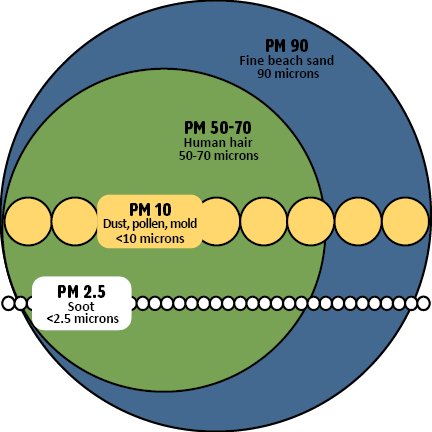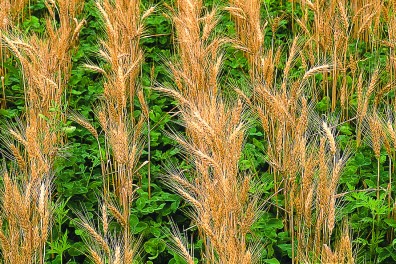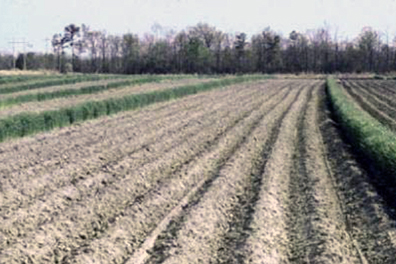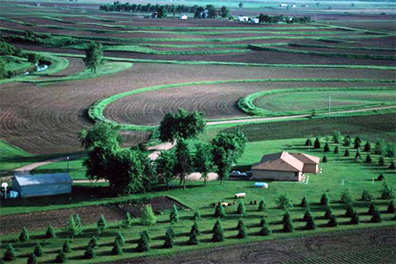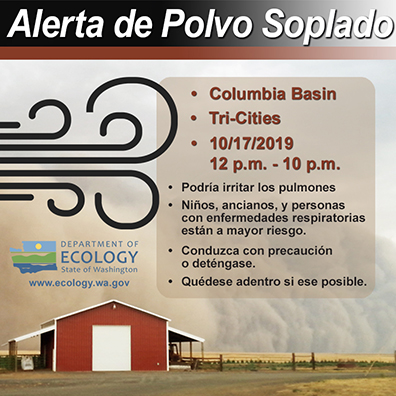
In school, most of us learned about the Dust Bowl that swept the southern plain states in the 1930s. But did you know, Washington has vulnerable regions as well? Horse Heaven Hills area of Washington state.
One of them is the rural, mostly agricultural, Horse Heaven Hills area. It hides in the rain shadow of the Cascade Mountains, receiving only nine inches of precipitation a year. The region is very dry in the summer and vulnerable to fierce winds that create dust storms (also called haboobs).
These dust storms carry tiny particles from the area to more populated towns like Kennewick, Pasco, Richland, and Wallula.
Dust in the wind
Dust, also called particulate matter — or PM10 — is a mixture of solid particles and liquid droplets in the air that can be inhaled deep into your lungs. It's especially harmful for those with chronic heart and lung disease (like asthma, bronchitis, and emphysema), children, and the elderly. Healthy people may experience irritation of the eyes, nose, throat, and respiratory system during exercise. Dust storms increase the risk for car accidents and highway closures when visibility is reduced. Click image to enlarge
If you get caught in a dust storm:
- Spend as little time outside as possible
- Avoid hard exercise
- Be alert for sudden changes in visibility
- Pull over if you have trouble seeing
- Close your windows, vents, and doors
- Wear an N95, or greater, mask outdoors
- Ask your doctor for advice
Farming operations that use intensive tillage can exacerbate dust storms when the bare ground is exposed to high winds. Eroding soil depletes essential nutrients, causing lower crop yields and economic loss, and can degrade air and water quality.
Calling in the "Dust Busters"
In the late 1980s, the area around Wallula was in violation of the federal National Ambient Air Quality Standards (NAAQS) because of blowing dust. In 1990, the U.S. Environmental Protection Agency (EPA) determined that the region was in “nonattainment” — meaning that the area didn't meet the required federal standards for particle pollution. Once an area is in nonattainment status, EPA requries states to develop a state implementation plan to bring the area back into compliance.
To resolve this, Ecology and our partners installed air monitors to measure the NAAQS. By 2002, Wallula’s air quality improved. Once the area was back into compliance, a 10-year initial maintenance plan was developed in 2005, followed by a second 10-year maintenance plan in 2019.
From the maintenance plan, a separate Dust Mitigation Plan for the Horse Heaven Hills was born in 2019. This separate but related plan helps the area stay in compliance and protects farmlands and public health. The state of Washington allocated $144,300 to form a "Dust Buster Workgroup” this biennium. The workgroup develops projects to reduce dust and help the public understand the threat dust poses. The funds are awarded via grants to the Benton Conservation District and help producers implement erosion control methods like the ones listed below.
Cover crops protect the soil and return nutrients back to the soil.
- Boost crop yield
- Improve soil structure and organic matter
- Suppress weeds and pests
- Reduce fertilizer, herbicide, and pesticide runoff
- Conserve soil moisture
- Protect water quality
- Can be used as forage for livestock
Herbaceous wind barriers can slow wind-caused erosion and distribute snow providing soil moisture.
- Protect growing crops from damage from wind-borne soil particles.
- Build soil quality.
- Improve yields.
- Help in the management of snow distribution for plant available soil moisture.
- Provide wildlife food and cover.
No-till farming protects erosion and adds organic matter to the soil.
- Increase organic matter.
- Improve soil structure, aeration, and beneficial microbes.
- Retain soil moisture and conserve water.
- Reduce fuel use and save time plowing.
- Reduce herbicide runoff.
- Result in a higher crop yield over time.
Windbreaks can help prevent soil erosion caused by the wind and provide habitat for wildlife.
- Protect crops from wind abrasion.
- Aid in soil and water conservation.
- Provide habitat for pollinators.
- Protect livestock and property.
- Improve aesthetics.
- Reduce odors.
- Spanish radio ads
- Social media ads in English and Spanish
- Email lists
- Printed materials
- Conference attendance
Keeping the dust down
Soil in the U.S. is being swept away by erosion and wind 10 to 40 times faster than it is being replenished so our work must continue. We're hopeful we can support more regions in the future. You can help by driving slower on unpaved roads and postponing projects that stir up dust.
Meanwhile, we're keeping up with the latest research and best management practices. This could include how soil amendments and erosion control methods can help slow the effects of climate change through soil carbon sequestration — But we’ll save that topic for the future.
- Sign up for wireless emergency alerts
- Keep an eye on our air monitors
- Join our email list for tips to help you protect the land and your health



